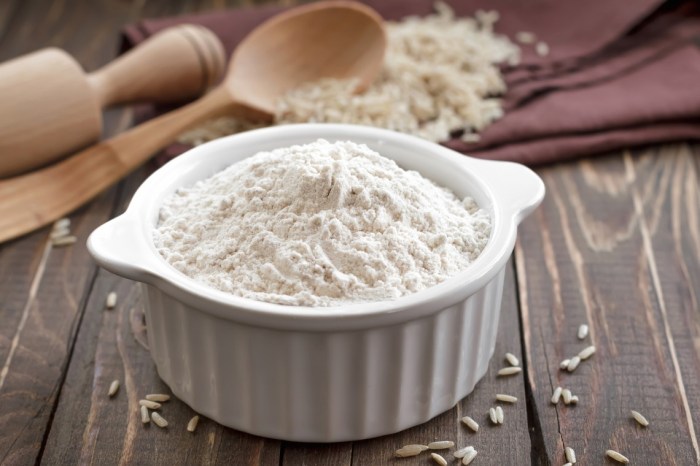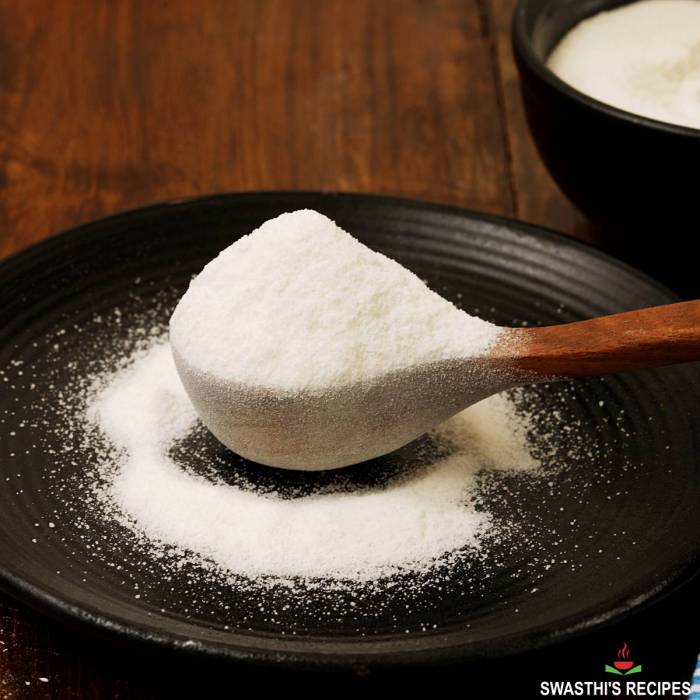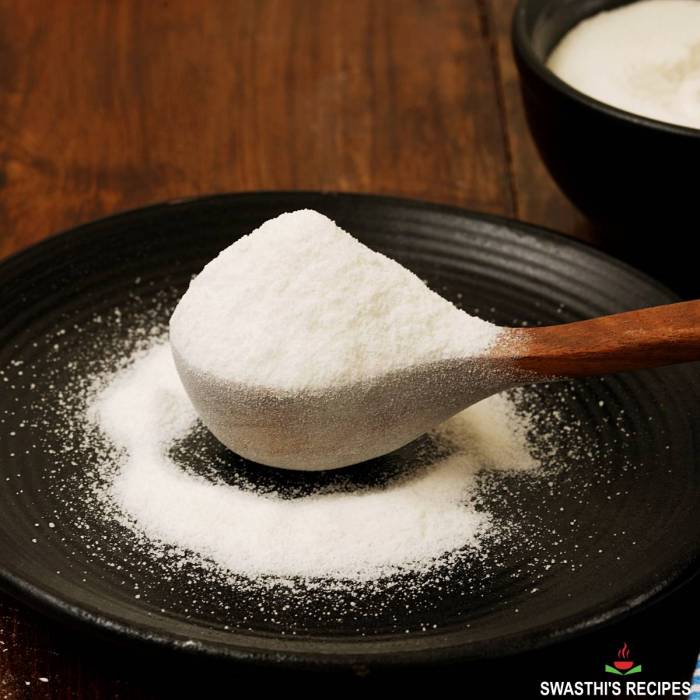DIY rice flour opens up a world of culinary possibilities, allowing you to create delicious and healthy gluten-free treats from scratch. It’s a simple and rewarding process that gives you complete control over the ingredients and quality of your flour.
This guide will walk you through the steps of making rice flour at home, from selecting the right rice to grinding it into a fine powder. We’ll explore the different types of rice, their suitability for flour, and the various grinding techniques you can use. You’ll learn about storing your homemade flour, its nutritional value, and the many ways you can use it in your kitchen.
Introduction to DIY Rice Flour

Making rice flour at home is a rewarding experience that allows you to control the quality and freshness of your ingredients. It’s a simple process that offers numerous benefits, from ensuring a gluten-free option to creating a unique flavor profile for your culinary creations.
This guide will walk you through the essentials of DIY rice flour production, providing insights into the necessary ingredients, equipment, and the different types of rice suitable for flour making.
Ingredients and Equipment
Rice flour is primarily made from rice, a staple grain in many cultures. The quality of the rice used directly impacts the final flour’s texture and flavor. You’ll need the following:
- Rice: The type of rice used plays a crucial role in the flour’s characteristics. Short-grain rice, known for its sticky texture, produces a flour suitable for mochi and other chewy treats. Long-grain rice, on the other hand, yields a lighter and less sticky flour ideal for baking.
- Food Processor or Blender: A powerful food processor or blender is essential for grinding the rice into a fine powder.
- Fine-Mesh Sieve: This tool is used to sift the flour, removing any larger particles for a smoother texture.
Types of Rice for Flour Making
The world of rice is diverse, and different varieties are suitable for various purposes. Here are some common types of rice used for flour making:
- Short-Grain Rice: This rice variety is known for its sticky texture when cooked, making it perfect for dishes like mochi and sushi rice. When ground into flour, it creates a dense and slightly chewy texture.
- Long-Grain Rice: This type of rice produces a lighter and less sticky flour, making it ideal for baking cakes, cookies, and other pastries.
- Glutinous Rice: Also known as sticky rice, glutinous rice is high in starch, making it incredibly sticky when cooked. This rice is used for mochi, rice cakes, and other chewy treats.
- Brown Rice: This whole-grain rice is a healthy option that retains the bran and germ, providing additional nutrients. The resulting flour is slightly coarser and has a nutty flavor.
Grinding Techniques

The method you choose to grind your rice into flour can significantly impact the texture and quality of your final product. Let’s explore some popular options and their unique characteristics.
Food Processor vs. Blender
A food processor is generally preferred for grinding rice flour due to its powerful motor and wider base, which allows for more efficient processing of larger quantities of rice. Blenders, on the other hand, are more suited for smaller batches and may struggle with the hardness of rice grains.
- Food Processor: The blades in a food processor are designed to chop and grind, making them ideal for breaking down rice grains into a fine powder. Food processors also have a pulse function, which is helpful for controlling the grinding process and preventing over-processing.
- Blender: Blenders are primarily designed for blending liquids, but they can also be used to grind rice. However, the smaller blades and narrow base of a blender can lead to uneven grinding and a less consistent flour texture.
Traditional Stone Mill, Diy rice flour
Traditional stone mills, also known as gristmills, use two large stones to grind grains. This method produces a very fine and flavorful flour, as the stones create a gentle grinding action that doesn’t generate excessive heat. While stone mills are often associated with a more rustic approach, they can be quite efficient and produce a high-quality flour.
Achieving Different Flour Textures
The desired texture of your rice flour will influence the grinding technique and time required.
- Fine Flour: To achieve a fine flour, use a food processor or a stone mill and grind the rice for a longer period, allowing the grains to break down completely.
- Medium Flour: For a medium-textured flour, use a food processor and grind the rice for a shorter period, leaving some small rice particles intact.
- Coarse Flour: For a coarse flour, use a food processor and pulse the rice for a few seconds, only partially grinding the grains. This type of flour is often used in recipes where texture is desired, such as breading or coating.
Step-by-Step Guide: Grinding Rice Flour with a Food Processor
- Prepare the Rice: Rinse the rice thoroughly and allow it to dry completely. This will prevent clumping and ensure even grinding.
- Safety First: Always wear safety glasses and a dust mask when grinding rice to protect yourself from flying particles.
- Start Grinding: Add a small amount of rice to the food processor and pulse for a few seconds. Add more rice as needed, ensuring the processor isn’t overloaded.
- Check for Consistency: As the rice is ground, stop the processor periodically to check the texture. If you want a fine flour, continue grinding until the rice is a fine powder. If you want a coarser flour, stop grinding when the rice is the desired texture.
- Sieve and Store: After grinding, sift the flour through a fine-mesh sieve to remove any large particles. Store the flour in an airtight container in a cool, dry place.
Tips and Tricks: Diy Rice Flour

Making rice flour at home is a rewarding experience, but it can also be a bit tricky. Here are some tips and tricks to help you achieve consistent results and troubleshoot any challenges you might encounter along the way.
Tips for Consistent Results
- Use high-quality rice: Start with good-quality rice for the best flavor and texture. Look for long-grain rice, as it tends to produce a finer flour. Avoid using broken rice or rice with impurities, as this can affect the final product.
- Toast the rice: Toasting the rice before grinding helps to enhance its flavor and reduce the amount of moisture, which can make grinding easier. Spread the rice in a single layer on a baking sheet and toast in a preheated oven at 300°F (150°C) for 10-15 minutes, stirring occasionally, until lightly golden brown. Let it cool completely before grinding.
- Grind in small batches: Grinding rice in small batches helps to ensure even grinding and prevents the flour from becoming too hot. This is particularly important if you’re using a small grinder. If you’re using a food processor, grind the rice in short bursts, pausing to scrape down the sides and ensure even grinding.
- Sift the flour: Sift the flour after grinding to remove any larger particles or clumps. This will give you a smoother and more consistent texture. You can use a fine-mesh sieve or a cheesecloth for this purpose.
- Store properly: Store your homemade rice flour in an airtight container in a cool, dry place. This will help to prevent it from absorbing moisture and becoming clumpy.
Common Challenges and Solutions
- Clumpy flour: If your rice flour is clumpy, it’s likely due to moisture absorption. To fix this, you can try drying the flour in a low oven for a few minutes or spreading it out on a baking sheet and letting it air dry. You can also try sifting the flour again to remove any clumps.
- Uneven grinding: If your rice flour has large particles, it means the rice wasn’t ground finely enough. Try grinding the rice in smaller batches or for a longer period of time. You can also try using a different grinder with a finer grinding setting.
- Off-flavor: If your rice flour has an off-flavor, it could be due to the rice itself, the grinding process, or improper storage. Ensure you’re using fresh, high-quality rice and store the flour properly. If the off-flavor persists, try using a different type of rice or a different grinder.
Creative Uses for Leftover Rice Flour
- Thickener: Rice flour is a great thickener for soups, stews, sauces, and gravies. It adds a subtle flavor and a smooth texture.
- Batter: Use rice flour to make a light and crispy batter for frying vegetables, fish, or chicken. It’s also a good choice for gluten-free tempura batter.
- Breadcrumbs: You can use rice flour to make breadcrumbs for coating chicken, fish, or vegetables before baking or frying. Simply toast the flour in a dry skillet until golden brown and slightly fragrant.
- Flourless baking: Rice flour can be used to make flourless cakes, cookies, and other baked goods. It adds a slightly sweet and nutty flavor and a chewy texture.
- Flavor variations: Experiment with different flavors by adding spices, herbs, or other ingredients to your rice flour. For example, you could add turmeric for a vibrant yellow color and a slightly earthy flavor, or cinnamon for a warm and comforting taste.
Making your own rice flour is a rewarding and empowering culinary journey. It allows you to create delicious and healthy food while controlling the ingredients and quality. So, grab some rice, a grinder, and let your culinary creativity flow! From gluten-free baking to flavorful sauces, the possibilities are endless.
Making your own rice flour is a simple and satisfying project, and it’s a great way to use up leftover rice. You can even use it to make a variety of delicious treats, like rice flour pancakes or even a DIY pillowcase for a unique and personal touch. Just remember to sift the flour well to remove any lumps before using it in your recipes.

